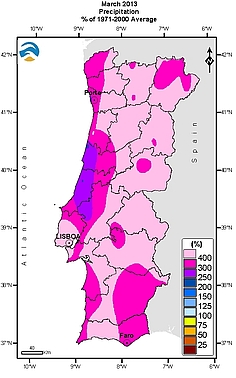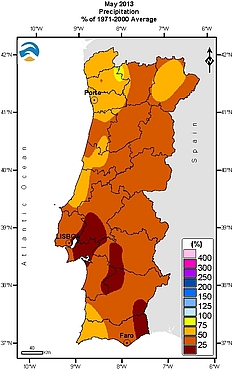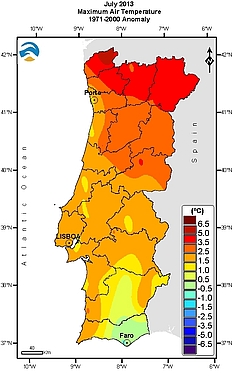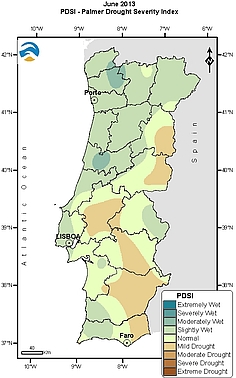Climatologic background
Knowledge of the climatological background prior to the Caramulo fires is central to understanding the vegetation conditions. In fact, besides precipitation and temperature conditions preceding the fires, the state of vegetation also depends on the meteorological conditions during the vegetation growth cycle, several months prior to the fire event. When compared to the 1971-2000 climatological mean for the Caramulo area, the accumulated precipitation from October 2012 to April 2013 was above average (Figure 3a). At the beginning of the "fire season" (June 2013) the Caramulo region was thus moderately moist, according to the Palmer Drought Severity Index (PDSI) (Figure 3d). In short, meteorological conditions during the growth cycle were favorable to the production of vegetation, i.e. fire fuel.
Conversely, from May 2013 onwards the precipitation fell well below climatological values (Figure 3b) and from July onwards the temperature was clearly above the mean (Figure 3c). These conditions reduced the amount of moisture content on biomass and increased the amount of flammable vegetation. The month of August saw several days with minimum temperatures above 20 °C and maximum temperatures above 35 °C. During July and August several consecutive days with no precipitation were observed in the northwest of Portugal. These months were classified as dry to very dry in the Caramulo region.



